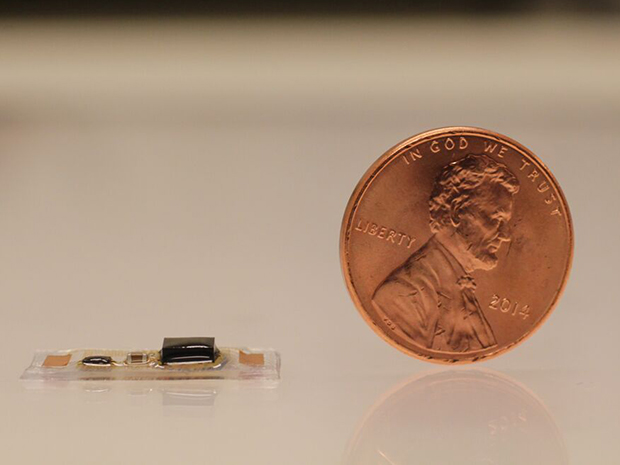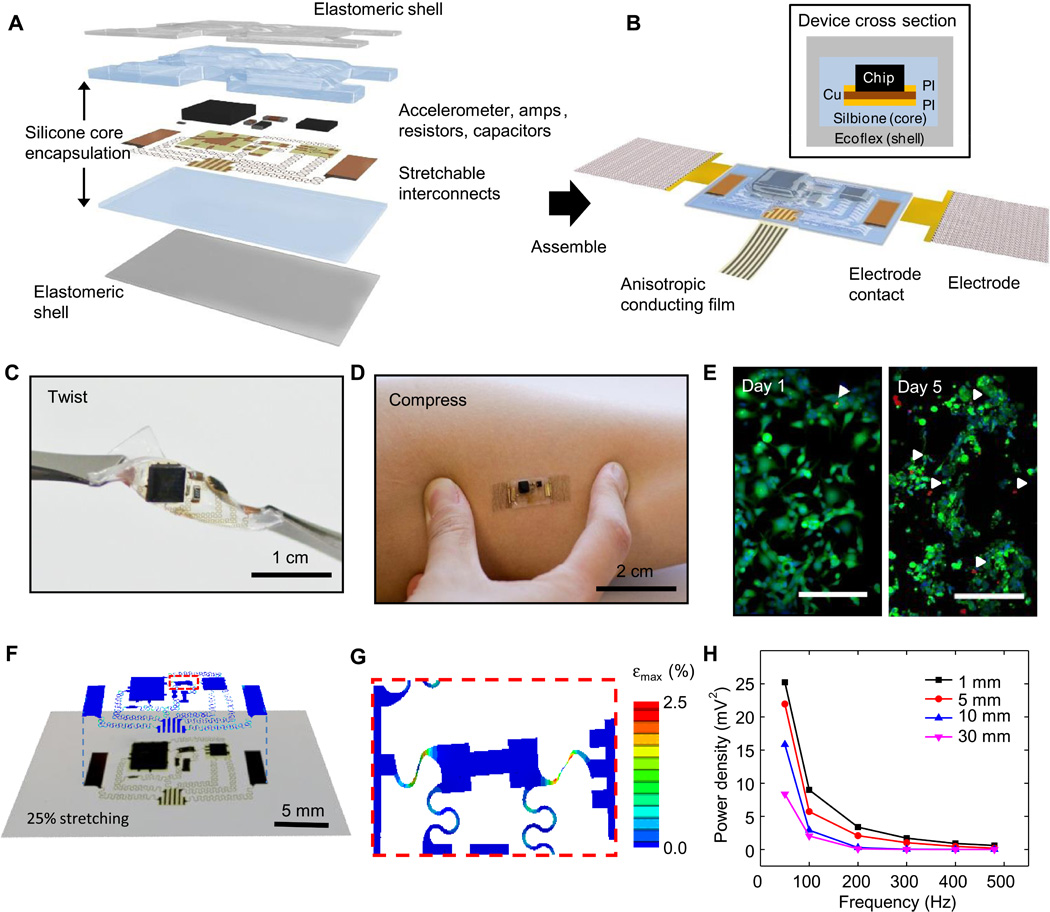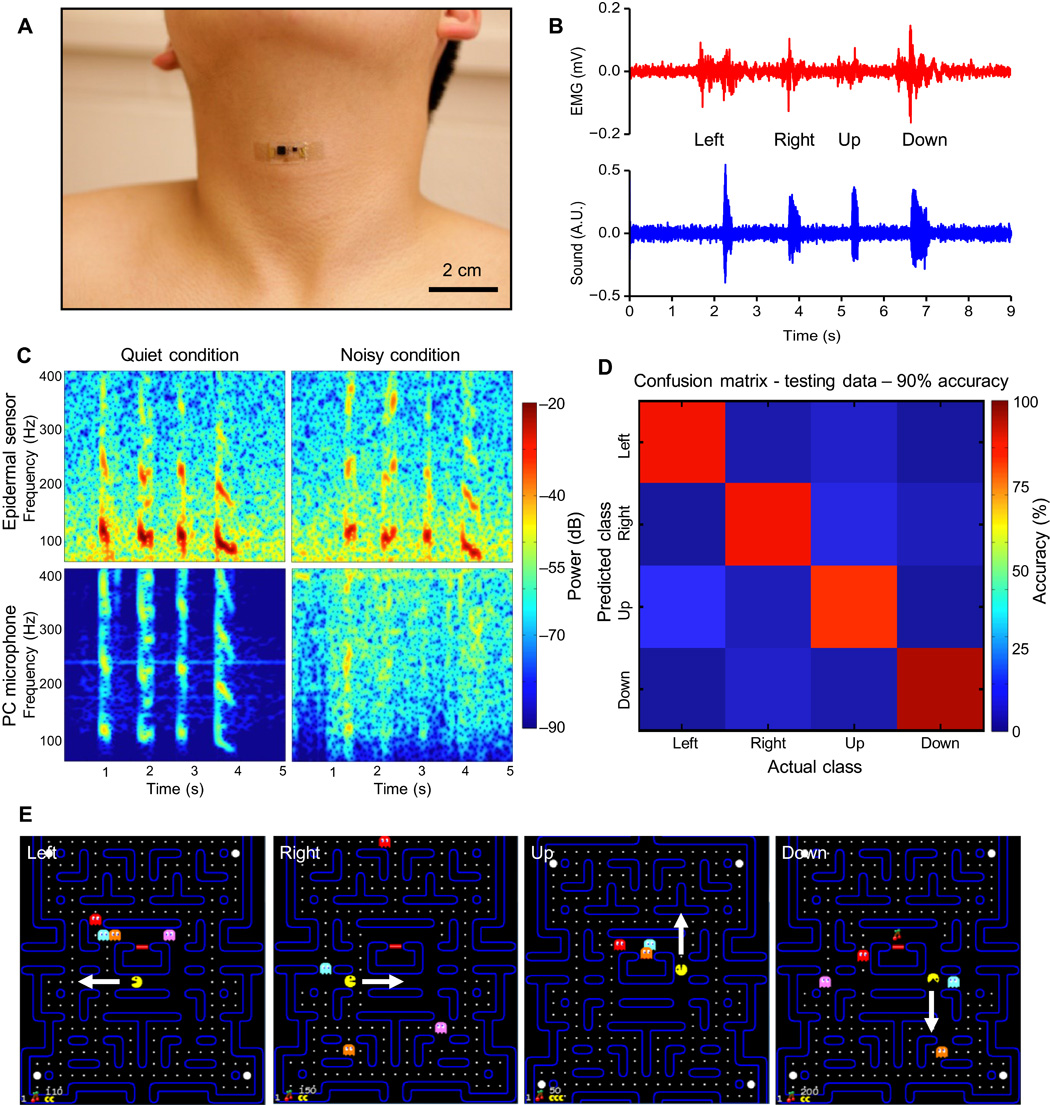A “patch” sensor can monitor the heart’s performance and recognize speech.

Northwestern University / University of Colorado Boulder
Physiological acoustic signals can give us a lot of useful information, including health status. The problem is that they cannot be heard without the help of special devices. Ordinary stethoscopes and digital accelerometers are capable of capturing some information, but they are not suitable for using them in a continuous, wearable mode. In addition, both have drawbacks associated with mechanical transmission of signals through the skin. Scientists have introduced a new device in which all these shortcomings were excluded.
A soft acoustic transducer, which can be worn on the skin as a patch, monitors the heart rate and recognizes human speech. This was stated by a team of creators from the University of Illinois at Urbana-Champaign . Such an epidermal sensor can help diagnose diseases and allow people to control robots and play computer games without a handheld device.
')

Device diagram: A - device structure; B - illustration of the assembled device; C - curved device supported by tweezers; D - skin sensor; E - fluorescent micrographs of cells cultured on the surface of the device. Green and red areas correspond to living and dead cells; F - demonstration of the possibilities of stretching the device; G - simulation results of interconnected structures experiencing the highest voltage, H - sum of oscillatory reactions measured on chicken breast - imitation of tissue at the source of vibration
Previous designs that detected acoustic vibrations through the skin mainly worked on the stethoscope principle. According to the lead author of the study, Howard Yu Hao Liu, they were too large and were created from rigid materials. Such devices were difficult to carry, and they muffled acoustic signals to some degree.
Unlike bulky devices created earlier, miniature low-power MEMS accelerometers are used in the new sensors. They are placed in the plate of sticky and elastic silicone rubber. Researchers say that these accelerometers are tuned to vibrate frequencies in the range of 0.5 to 550 Hz. Such a frequency is characteristic of the sounds that make the vital organs of the human body. Elastic copper wires connect these sensors with amplifiers, resistors and capacitors.
The new device, similar to a small patch, weighs only 213.6 milligrams. Its thickness is 20 millimeters. The device is quite flexible and elastic, so it can be worn on any part of the body, including the neck. Someone decides that wearing a rubber plate for a long time on the body is very inconvenient. At least due to the fact that the skin under it will heat up and sweat. But scientists claim that the silicone rubber, from which the “patch” is made, ensures the evaporation of sweat. The device also has electrodes that record electrical signals from the body. They help the sensor monitor the work of the heart and pacemakers.
Experiments have shown that the sensor can continuously collect several different types of acoustic signals at once: opening and closing of heart valves, blood pulsation in the carotid artery in the neck, vibrations of the vocal cords and movement in the gastrointestinal tract. Scientists tested volunteers at a private medical clinic in Tucson, Arizona. During the tests, it turned out that the device is able to detect heart murmurs. Scientists also conducted an experiment using the ventricular support system of the heart. This device helps the heart to pump blood, thereby partially or completely replacing its function. Scientists simulated thus the work of the heart, as well as simulated conditions for thrombus formation and embolism. New sensors coped with the task and were able to detect blood clots that could potentially lead to death.
In addition to medicine, scientists have found other uses for their device. If the “patch” is glued to the throat, it can be used to control robots or play video games, to serve as an interface for sending commands to the computer. The sensor, placed accordingly, can capture signals from the muscles of the articular apparatus and acoustic oscillations of the vocal cords. A volunteer could control the character Pac-Man, giving voice commands "up", "down", "left" and "right." The accuracy of word recognition was 90%.

Speech recognition: A - the location of the device on the body of a participant in the experiment; B - measurement of articular muscle signals (above) and acoustic signals (above); - comparison of words in a quiet (left) and noisy (right) setting recorded from the device (top) and an external microphone (bottom); D - the matrix describing the accuracy of speech recognition; E - speech recognition in the game
The close contact between the sensors and the skin makes their work virtually independent of the surrounding acoustic noise. In the diagram, you can see a comparison of the spectrograms of word-commands recorded during the game by an epidermal sensor and a standard iPhone microphone, which were attached to the throat. Sources of noise are located 2.5 meters from the object. In a calm environment, where the noise level did not exceed 30 dB, the sensor and microphone showed similar results. In a noisy environment (60 dB), the microphone recording suffered greatly, but it didn’t affect the work of the prototype.
So the device can be used for communication in conditions of increased noise. Howard Yu Hao Liu believes that the sensor can also help people with speech disorders, soldiers on the battlefield and first eyewitnesses in disaster areas.
Now the work of the prototype depends on the wires through which the data is transmitted. To make it more practical for use in the real world, a team of scientists is going to fully translate the device into wireless data transmission. In the future, subsequent studies will help increase the frequency range of vibrations recognized by the epidermal sensor, up to 2000 Hz. Then the prototype recognizes the full range of vibrations of human speech and can act as a microphone.
Scientific work published in the journal ScienceAdvances November 16, 2016
DOI: 10.1126 / sciadv.1601185
Source: https://habr.com/ru/post/399183/
All Articles